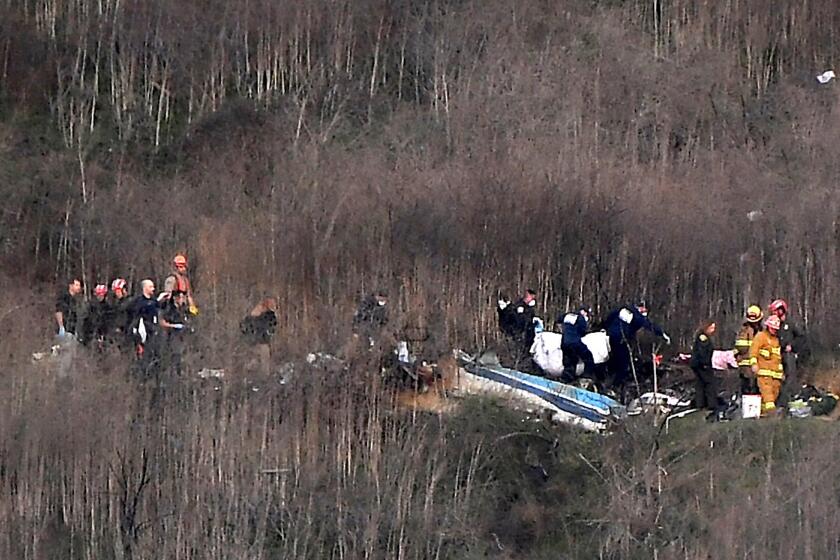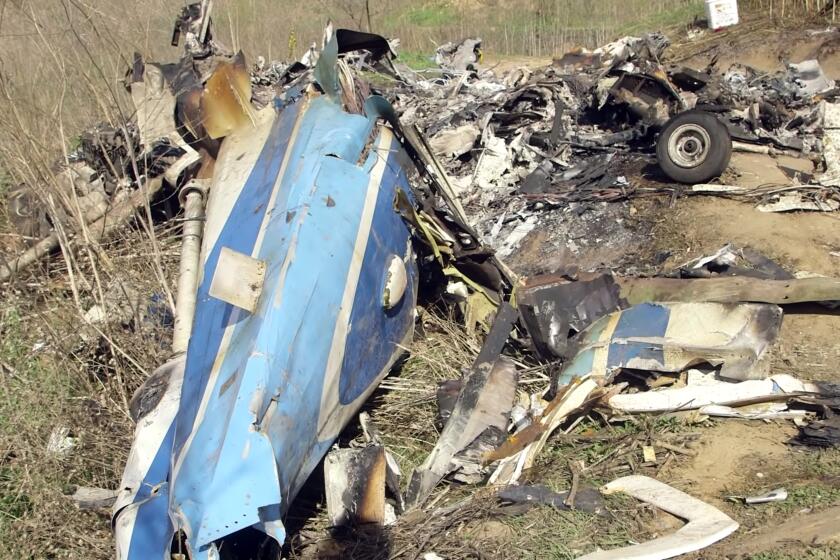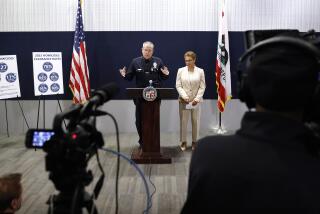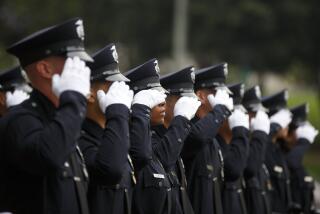Shifting stories, sudden amnesia mark Kobe Bryant crash photos trial testimony
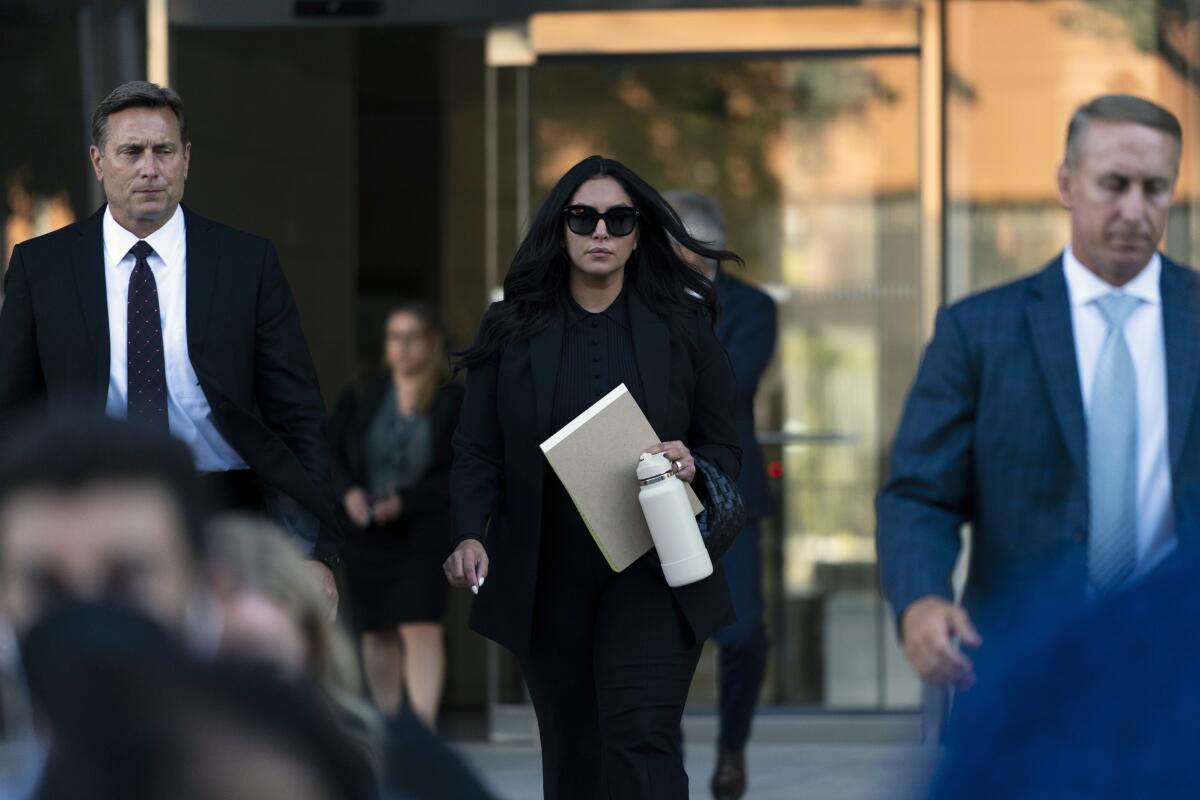
- Share via
When he took the stand Monday in the trial over photos of the helicopter crash that killed Kobe Bryant, his daughter and seven others, Los Angeles County Sheriff’s Deputy Rafael Mejia said he didn’t know whether victims’ bodies had been visible in photos sent to him by another deputy.
That uncertainty didn’t jibe with an interview Mejia gave sheriff’s investigators two years ago, when he described in detail body parts he’d seen in the photos.
A second deputy followed Mejia on Monday and gave similarly conflicting testimony.
And the day also featured retired Los Angeles County Fire Capt. Brian Jordan, who claimed under oath that he did not remember being at the crash site at all. In an earlier deposition, Jordan recounted walking amid the crash scene.
The shifting stories and sudden amnesia were among several inconsistencies and contradictions that lawyers for Bryant’s widow, Vanessa Bryant, and Christopher Chester — whose wife, Sarah, and daughter, Payton, were killed in the Jan. 26, 2020, crash — seized on as the trial grinded through its fourth day.
A high-profile trial begins over L.A. County Sheriff’s deputies’ sharing photos of the crash that killed Kobe Bryant.
Bryant and Chester have sued Los Angeles County in federal court, alleging the photos of the victims’ bodies that deputies and firefighters took and disseminated amounted to negligence and invasion of privacy.
“Time has passed,” Mejia told jurors when he was asked to explain several discrepancies in his testimony. “It’s not that I was intentionally trying to lie. It’s a lapse in memory.”
County lawyers have argued there were legitimate reasons for first responders to take and receive the photos, including to help determine the size of the crash site and decide what resources were needed. Bryant’s helicopter crashed into a Calabasas hillside in dense fog, killing the Lakers star, his daughter Gianna and others on their way to a youth basketball game in Thousand Oaks.
But an expert witness who testified last week for Bryant and Chester said the behavior of the deputies and Jordan were examples of a macabre, long-standing practice in law enforcement of taking and sharing gruesome photos from crime or accident scenes, especially when celebrities are involved.
Adam Bercovici, a retired lieutenant for the Los Angeles Police Department who now works as a consultant, testified that the so-called death books are a widespread problem. As a young LAPD officer, he said, a Polaroid photo of Nicole Brown Simpson’s body was shown to him.
“This behavior has been tolerated for decades,” Bryant’s attorney Luis Li told jurors during his opening statement last week.
Lawyers for the county dispute that there’s a long-standing practice of county employees sharing such images. Their claims were undermined by Sheriff Alex Villanueva, who said in a 2020 Times interview played for jurors that “every police department struggles with the same thing where people take photos, and they’re not evidence.”
For nearly five weeks, the leadership of the Sheriff’s Department tried to keep a lid on the episode instead of following normal investigative protocols.
Jurors have also heard several times another interview clip in which Villanueva said the only agencies that had a legitimate reason to take photos that day were the National Transportation Safety Board, which investigates plane crashes, and the coroner’s office.
Sheriff’s Deputy Doug Johnson was one of the only deputies able to make the arduous trek up to the crash site. He testified last week that after searching for survivors and determining there were none, he was asked by officials at the command post to document the scene and send the photos.
“You understood that to include close-ups of human remains?” he was asked by one of Bryant’s attorneys.
“Yes, sir,” Johnson responded. He said he took about 25 photos, a third of which showed body parts.
He said he doesn’t regret taking the photos and wouldn’t do anything differently if he had the chance at a do-over. “I know I didn’t do anything wrong,” Johnson testified.
Johnson said that when Jordan, the fire captain, arrived at the scene, Jordan said he was in charge of media relations and asked Johnson to walk him through the site and point out the bodies. Johnson testified that he escorted Jordan through the scene while the fire official took photos.
Jordan testified Monday that he had been ordered by Anthony Marrone, then the county’s deputy fire chief, to take photos of the crash site, but insisted he could not remember taking the photos.
“I don’t remember being there,” Jordan told jurors.
When a lawyer for Bryant played a recording of Jordan saying in a deposition that he “walked most of the scene” of the crash, Jordan told the jury: “That sounds like me, but I don’t remember that.”
At one point, Jordan, who worked for the county Fire Department for 35 years until his retirement last year, reiterated his inability to recall the photos before standing up, walking off the witness stand and announcing, “I need a break.”
Jordan bolted from the witness stand twice more during his testimony. He acknowledged later that he has “memory issues.”
Marrone, now the county’s acting fire chief, has denied instructing Jordan to take photos of the helicopter crash site.
Li asked Jordan whether he had sent close-up photos of human remains to a colleague, Tony Imbrenda, who has testified that Jordan had sent him such pictures. Imbrenda showed photos of the crash to other firefighters at a gala event at the Hilton Hotel in Universal City.
“They were not pictures of people,” Jordan claimed Monday. Any graphic photos the colleague received were “not from me.”
Jordan testified that he gave his work phone, iPad and laptop to county investigators who looked into the sharing of the crash photos, but said he had “no clue” why the laptop’s hard drive had gone missing.
Jerry Jackson, Chester’s lawyer, pressed Jordan again to explain why he took close-up photos of human remains.
“I do not remember what I took pictures of,” he said. “The way the whole scene looked, it’s going to haunt me forever.”
As Jackson reviewed the specific remains scattered around the crash site, Jordan told him, “Please stop describing that scene to me. It’s not good.”
More to Read
Sign up for Essential California
The most important California stories and recommendations in your inbox every morning.
You may occasionally receive promotional content from the Los Angeles Times.
